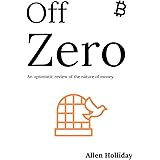Your Essential Beginner’s Guide to Investing in Crypto in 2024
Are you considering entering the exciting world of digital assets but feel overwhelmed by its complexities? As demonstrated in the accompanying video, **investing in crypto** can seem daunting for those with zero experience, yet it holds immense potential. This comprehensive guide is designed to clarify the fundamental aspects of **crypto investing for beginners**, providing you with the essential knowledge needed to navigate the space safely and effectively. We will delve into critical concepts, outline practical steps, and highlight common pitfalls to avoid, ensuring you are well-equipped on your journey into the blockchain economy.
Establishing Your Foundation: Setting Up a Crypto Exchange
For most new entrants, the initial step into **investing in crypto** involves setting up an account with a reputable crypto exchange. Platforms such as Coinbase or Kraken are widely used, and for those outside the US, Binance also presents a viable option. The process is generally straightforward, paralleling the creation of any online financial account. Personal information is submitted, an email and password are established, and a bank account is securely linked to facilitate transactions. Upon completion, an individual account is prepared for its inaugural crypto purchase.
Beyond Price Tags: Understanding Market Cap and Fully Diluted Value (FDV)
A common misconception among new investors revolves around a token’s price. It is frequently observed that only the price per token is considered, which can lead to significant misjudgments regarding a project’s true size and growth potential. As explained in the video, 99% of new investors do not grasp the critical importance of market capitalization, and even experienced investors might overlook fully diluted value (FDV). Both metrics are indispensable for making informed investment decisions and for avoiding financially detrimental errors.
Market Capitalization: The True Measure of Size
Market capitalization (market cap) is calculated by multiplying a token’s current price by the total number of tokens currently in circulation. This provides a far more accurate representation of a project’s overall size than its individual token price. For instance, in 2021, tokens like XRP and Dogecoin were often perceived as “cheap” due to their sub-dollar prices, especially when compared to Bitcoin’s price, which soared past $60,000. However, XRP, currently priced at approximately 66 cents, boasts a market cap exceeding $36 billion, making it the sixth-largest cryptocurrency by size. Conversely, Lido Staked ETH, priced at over $3,500, has a smaller market cap. This demonstrates that a higher token price does not necessarily equate to a larger project. Understanding this distinction is paramount for any beginner interested in **crypto investing**.
To provide further context, Bitcoin, the largest cryptocurrency, commands a market cap of $1.3 trillion. Ethereum follows with $430 billion, and Solana stands as the fifth largest at $57 billion. These figures vividly illustrate the scale difference among projects. Consider a project like Perion (PERK), with a modest market cap of $19 million. Should it achieve the market cap of XRP, a remarkable 1,894x gain would be realized, transforming a $1,000 investment into $1.8 million. Such comparisons underscore why market cap, not price, is the correct metric for evaluating a project’s potential.
Fully Diluted Value (FDV) and Token Unlocks: Future Supply Considerations
An even more advanced metric that warrants attention is the Fully Diluted Value (FDV). FDV represents a project’s market cap if all its tokens, including those not yet in circulation, were to be released. Many projects launch with only a fraction of their total token supply available, with the remainder reserved for teams, early investors, or future protocol uses. This initial “low float” can inflate prices and valuations, creating a misleading perception of scarcity.
However, when these locked tokens are eventually released (known as “token unlocks”), the sudden influx of supply can drastically impact the token’s price, often leading to significant corrections. A substantial discrepancy between a project’s current market cap and its FDV could indicate future price volatility. For example, Celestia’s market cap is $2.7 billion, yet its FDV is $16 billion, indicating $13.3 billion worth of tokens are still slated for release. Resources like TokenUnlocks.app are available to monitor upcoming token unlocks, enabling investors to anticipate and mitigate potential risks. It is worth noting that established tokens such as Ethereum and Polygon often have their entire supply in circulation, thus their market cap is equal to their FDV.
Navigating the Diverse Crypto Ecosystem: Types of Digital Assets
The notion that all crypto tokens serve as a form of currency is a frequent misunderstanding. While Bitcoin and stablecoins like USDC aim to function as digital currencies, the utility of tokens extends far beyond this singular purpose. The blockchain ecosystem is incredibly diverse, offering a multitude of applications and functionalities.
-
Currencies: Primarily designed for transactions, like Bitcoin, which serves as a store of value and medium of exchange, or stablecoins, which peg their value to fiat currencies.
-
Utility Tokens: These grant access to a product or service within a blockchain ecosystem. Ethereum (ETH), for example, is the native token of a vast ecosystem of decentralized applications (dApps) and chains, generating over $4.6 billion in annualized revenue through gas fees. These fees are paid to secure the network and execute smart contracts.
-
Governance Tokens: Holders of these tokens possess voting rights on the future development and direction of a protocol. Maker (MKR) is a prime example, allowing its community to govern the MakerDAO protocol and its stablecoin, Dai, which generates approximately $356 million in annualized fees.
-
Meme Coins: Tokens such as Wif or Pepe are driven purely by community sentiment and speculation, often lacking any inherent utility or purpose. Their value is largely derived from social media trends and viral appeal.
The broader universe of blockchain applications includes Decentralized Finance (DeFi) platforms, which allow for lending, borrowing, trading, and yield generation without traditional intermediaries. Decentralized Physical Infrastructure Networks (DePIN) are building user-owned networks for storage or 5G connectivity. Projects like Akash are creating decentralized compute networks, enabling companies to rent unused GPUs for AI model training and other computational tasks. The array of sectors—from Layer 2 solutions to gaming, NFTs, real-world assets (RWAs), and ZK (zero-knowledge) technology—is vast and continually expanding, underscoring the innovative landscape of **crypto investing**.
Going On-Chain: Wallets and Direct Blockchain Interaction
The term “on-chain” refers to interactions that occur directly on a public blockchain, akin to how “online” refers to interactions on the internet. Unlike the internet, which relies on privately owned corporate networks, on-chain activities are conducted on decentralized blockchains, which are not controlled by any single entity. This distinction is crucial, as many exclusive opportunities, such as early project access and staking rewards, are only available on-chain.
Crypto Wallets: Your Gateway to the Blockchain
To engage with on-chain activities, a crypto wallet is essential. These applications, available as browser extensions or mobile apps, allow users to interact with blockchains. When setting up a wallet, a “seed phrase” (a series of words) is generated. This phrase is critically important; it serves as the sole means of recovering funds if a device is lost or damaged. The seed phrase must be recorded and stored in an exceptionally secure, offline location, as its compromise grants full access to one’s digital assets. This mechanism signifies self-custody, where individuals bear sole responsibility for their funds, without reliance on customer service for recovery.
For enhanced security, hardware wallets like Ledger or Trezor are highly recommended. These physical USB-like devices store private keys offline, isolating them from internet-connected devices. When a hardware wallet is connected to a software wallet, such as Rabby Wallet (a favorite for its security features), transactions must be physically approved on the hardware device, adding an extra layer of protection against unauthorized access. This method ensures that private keys, which prove ownership of funds stored on the blockchain, remain secure.
Sending Funds and Navigating Networks
Transferring funds from an exchange to a wallet involves selecting the asset, specifying the destination address found in your wallet, and choosing the correct blockchain network. It is imperative to match the network carefully, as sending funds to the wrong network can result in permanent loss. While EVM-compatible networks (e.g., Ethereum, Polygon, Optimism, Arbitrum, Base) share the same address format, funds sent to one network are not automatically accessible on another without a bridging mechanism.
A “gas token” is also required on each network to cover transaction fees. For Ethereum, Optimism, Arbitrum, and Base, fees are paid in ETH, typically ranging from a few cents on Layer 2 networks to $5-$500+ on Ethereum mainnet, making Layer 2s preferable for smaller transactions due to their significantly lower costs. Other chains like Polygon (MATIC), Solana (SOL), and BNB Chain (BNB) use their native tokens for gas fees.
Interacting with Decentralized Exchanges (DEXs) and Bridging Across Chains
Decentralized Exchanges (DEXs) are crucial platforms for **investing in crypto**, enabling direct peer-to-peer token swaps without an intermediary. For example, using Uniswap to swap Ethereum (ETH) for Pendle (PENDLE) on the Arbitrum network involves connecting a wallet, selecting the desired tokens and amounts, and approving the transaction. DEXs often provide access to newer tokens before they are listed on centralized exchanges, offering early investment opportunities.
When tokens need to be moved between different blockchain networks (e.g., from Optimism to Polygon), a “bridge” is utilized. Bridge aggregators like Jumper.fi can identify the most efficient and cost-effective routes for these transfers, which typically incur a small fee and take 15-40 minutes. While bridging can seem complex, significant advancements are underway to simplify this process. Solutions such as Polygon’s aggregation layer, expected by year-end, aim to enable near-instantaneous, seamless cross-chain transactions. These developments are pivotal in improving the user experience and fostering wider adoption of **crypto investing**.
Shielding Your Investments: A Guide to Avoiding Crypto Scams and Hacks
The cryptocurrency space, like the early internet, is unfortunately rife with individuals seeking to exploit unsuspecting investors. Scams in **crypto investing** primarily involve impersonation—of influencers, support staff, or legitimate companies—to either trick individuals into sending funds or to persuade them to sign malicious transactions that drain their wallets. Additionally, fake exchange websites are used to capture login credentials, enabling attackers to access and drain accounts.
The good news is that investors are largely in control of these outcomes. By adopting proactive security measures, the risk of falling victim can be significantly reduced:
-
Utilize Secure Wallets: Rabby Wallet is recommended for its built-in security features, including warnings for unfamiliar sites and transaction simulations, allowing users to preview outcomes before signing.
-
Hardware Wallets: Investing in a hardware wallet (e.g., Ledger, Trezor) provides an essential layer of offline security for private keys, making unauthorized access extremely difficult.
-
Cold Storage Addresses: With a hardware wallet, multiple addresses can be generated. Designating a “cold storage” address—used only for sending funds in and out, never for interacting with dApps or signing transactions—can limit exposure. If a “hot” transacting address is compromised, funds in the cold storage address remain secure.
-
Strong Two-Factor Authentication (2FA) on Exchanges: Always enable 2FA on centralized exchanges. Importantly, avoid using SMS-based 2FA due to the risk of “SIM card swap” scams, where attackers gain control of your phone number. Instead, opt for authenticator apps (like Google Authenticator) or physical hardware keys (like YubiKey) for superior protection.
-
Vigilance and Distrust of Strangers: Always triple-check URLs, verify identities, and never rush into transactions. Be inherently suspicious of unsolicited messages or offers, especially those promising high returns or requesting funds. The rise of AI-generated deepfakes and impersonations further necessitates extreme caution.
Navigating the Influencer Landscape: Recognizing Misleading Tactics
While many content creators offer valuable insights, the crypto space is also home to influencers employing tactics that, while not outright scams, can lead to significant financial losses. Awareness of these strategies is crucial for anyone engaging in **crypto investing**.
-
The Bandwagon Effect: Many influencers promote projects after they have already experienced substantial price increases and are at peak hype. By this point, it is often too late for new investors to realize significant gains. True opportunities are typically found when projects are nascent and unpopular, before mainstream attention inflates their value.
-
Pump-and-Dump Schemes: A particularly insidious tactic involves influencers promoting very small market cap tokens (often under $5 million) to their audience. The ensuing buying pressure from their followers artificially inflates the token’s price, at which point the influencer sells their holdings for a considerable profit, leaving their audience with depreciated assets. This rigged game is designed for the influencer’s gain, not yours.
-
The Shotgun Approach: Some influencers endorse a multitude of tokens, then selectively highlight the few that perform well as “predictions” while ignoring the numerous failures. This creates a false impression of expertise. Often, these influencers are not actually investing in all the tokens they promote; their revenue is derived from ad space or early allocations rather than market gains.
-
Undisclosed Paid Promotions: Certain influencers receive compensation (cash or early token allocations) to promote specific projects. While ethical influencers disclose these partnerships, some do not, which is illegal and highly deceptive. Investors should be wary of any content that appears to be promotional without clear disclosure.
Prudent Practices for Beginner Crypto Investors
Successful **investing in crypto** extends beyond mere token acquisition; it encompasses strategic planning and risk management:
-
Understanding Liquidity: For small market cap projects, liquidity (the ease with which an asset can be bought or sold without affecting its price) is paramount. Low liquidity projects are highly volatile and can be challenging to sell at a desirable price, especially for larger sums.
-
Position Sizing Rules: Implementing strict position sizing is a fundamental risk management strategy. This might involve allocating no more than 1-2% of your portfolio to any single position, with perhaps a 5% limit for very high-conviction plays. This prevents overexposure to any one asset and mitigates potential losses.
-
Exit Strategy: A predefined exit plan is crucial. Without one, emotions can dictate decisions, often leading to holding onto assets too long or selling too soon. An exit strategy, whether based on price targets or market conditions, helps solidify gains and avoid becoming “exit liquidity” for other investors.
-
Maximizing Yield Through Staking: Many tokens offer staking opportunities, allowing holders to earn additional yield by locking up their assets to support network operations. For example, the AKT token for Akash can be staked via Kepler Wallet for an annual yield of 10%. When combined with token appreciation, as seen with AKT’s over 1500% growth, this can significantly amplify overall returns. Researching how your chosen tokens can be utilized on-chain for yield generation is a valuable endeavor.
As you embark on your journey of **investing in crypto**, remember that continuous learning and independent research are your most powerful tools. The landscape evolves rapidly, and staying informed is key to making sound decisions.







